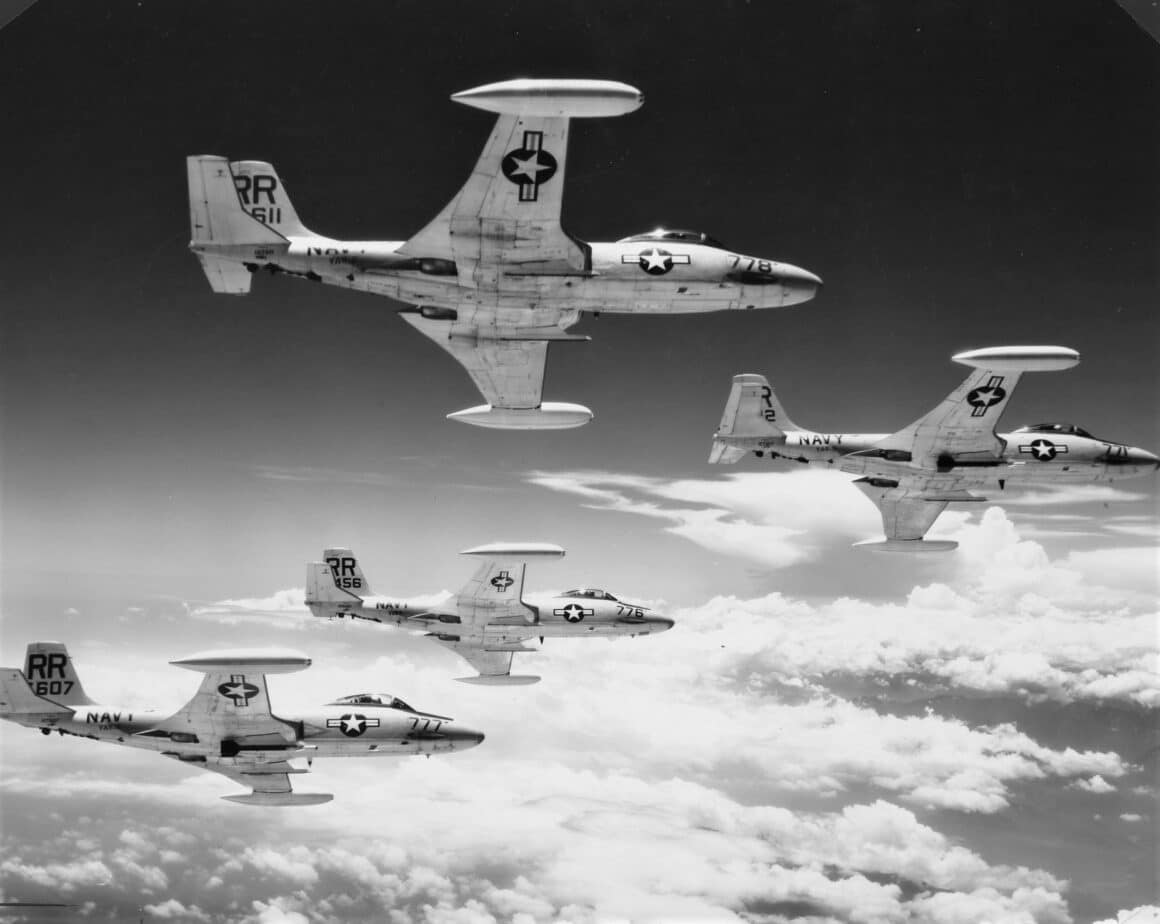Building a Better Banjo
Improvements in the Banshee really began with the F2H-2 variants. Increased thrust from uprated J34 engines and the addition of removable 200 gallon tip tanks made the base model -2 more capable. The addition of two armament pylons under each inner and outer wing increased the jet’s ability to tote ordnance. The F2H-2B was equipped with strengthened wings, stiffer landing gear struts, switchable power boost for the ailerons, and a strengthened inner pylon under the inner wing to allow the craft to carry a 1,650 pound Mark 7 nuclear bomb or a 3,230 pound Mark 8 nuclear bomb. One of the 20 millimeter cannons was omitted to make room for the additional electronics required to arm the nukes.
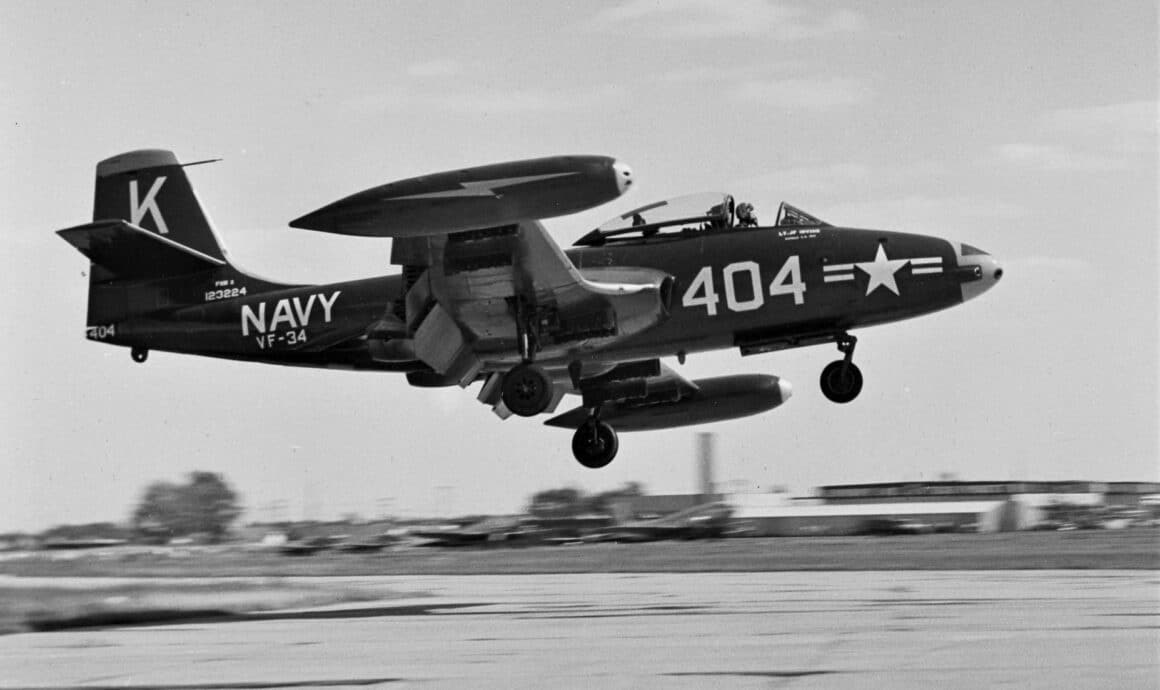
Night Fighting and Photo Flying
The F2H-2N was the first night fighter variant of the Banshee. A Sperry AN/APS-19 radar was mounted in the jet’s nose, which was lengthened by nearly three feet in order to accommodate it. The 20 millimeter cannons were moved aft to make room for the radar. The F2H-2P was the first photo reconnaissance version of the Banshee. As the first jet-powered photo recon aircraft for the Navy, the F2H-2P housed six cameras in its electrically-heated camera bay mounted in a two and a half foot longer than standard nose. The cameras could be rotated in both the vertical and horizontal planes by the pilot via remote controls. Flash cartridge pods could be carried underwing for night photo recon missions.
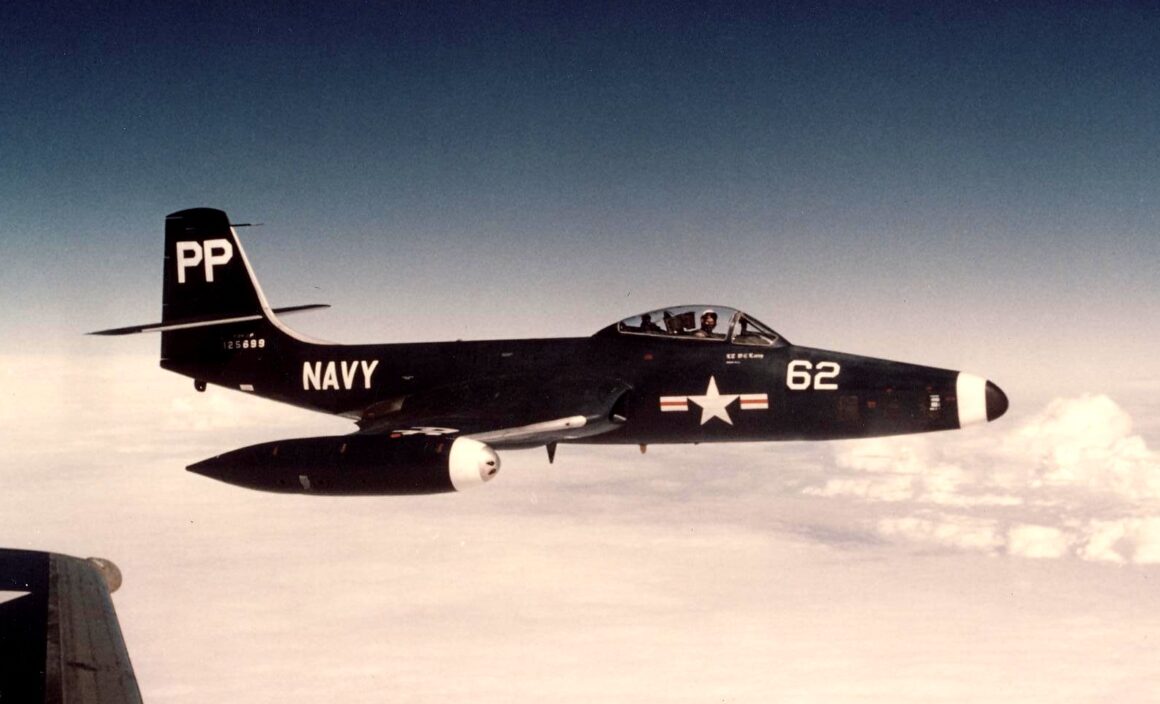
Going to War
It was the F2H-2 variant that went to war in Korea. Although the Banjo did its share of air-to-mud work with the Navy and the Marines, the jets were also employed as top cover for US Air Force B-29 raids into North Korea. In fact when the controversy over the Air Force’s B-36 bomber erupted during the late-1940s, the high-altitude capability of the F2H was a key point in the Navy’s argument against the claimed invincibility of the strategic bomber. It’s been suggested that the majority of the Banshees in the fleet were deployed to the Atlantic and Mediterranean because the potential for a confrontation with the Soviet Union was considered a higher priority than the Korean War.
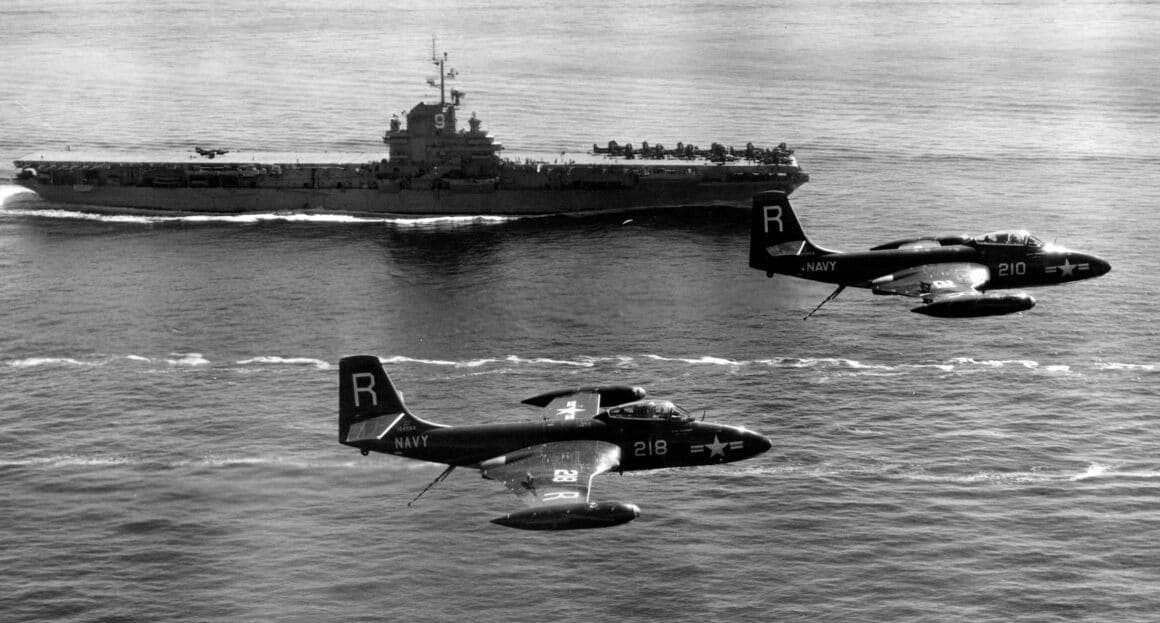
Most Valuable as an Intelligence Tool
Because of its straight wing design the Banjos that did operate over Korea didn’t mix it up with MiGs. No F2H-2s scored aerial victories, nor were any shot down in aerial combat, although three Banshees were lost to anti-aircraft artillery (AAA) during the war. F2H-2Ps flew photo reconnaissance missions during the Korean War, primarily with the USMC. Because accurate surface-to-air missiles had not yet been developed and AAA was ineffective against high-altitude targets, high-flying F2H-2Ps became valuable intelligence gatherers. The US Air Force actually escorted F2H-2Ps when they operated in areas frequented by enemy fighters. No F2H-2Ps were lost in aerial combat and only two F2H-2Ps were lost to radar-directed AAA gunfire during the war in Korea.
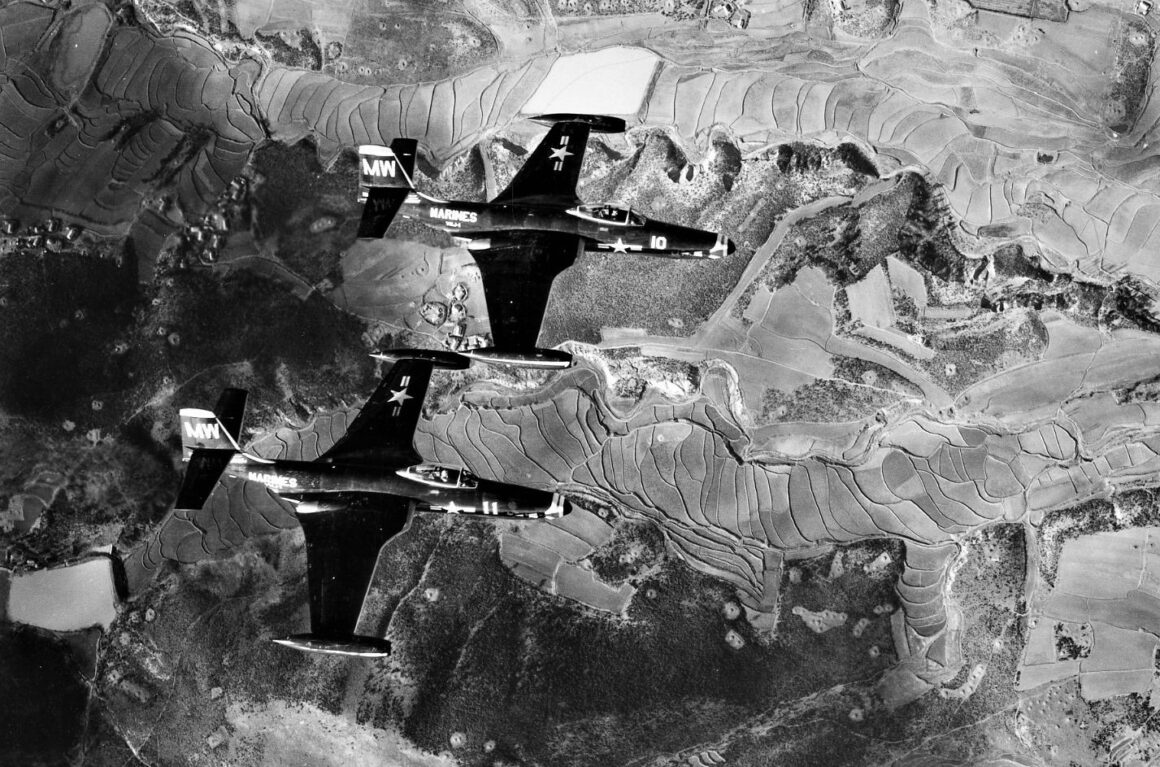
Continued Development
Banshee development continued with the all-weather capable F2H-3 variant. F2H-3s came equipped with Westinghouse AN/APQ-41 radar units fitted to eight foot longer fuselages with increased internal fuel capacity. The empennage was modified with the horizontal stabilizers being relocated to the fuselage with increased dihedral. To accommodate the radar installation the 20 millimeter cannons were moved down and aft. Ammunition capacity was increased and additional weapons pylons were fitted. An aerial refueling capability was added to the F2H-3 via a bolt-on refueling kit that replaced the upper portside cannon with a refueling probe. In total these revisions made the -3 look like an entirely different aircraft- which in many ways it was.
